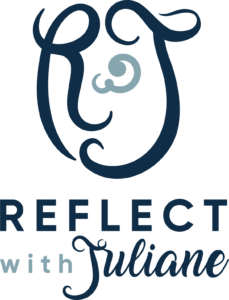Part 1: The Anxiety-Inducing Modern Workplace
In the hustle and bustle of today’s fast-paced working environments, the anxiety monster seems to lurk around every corner. It preys on our peace of mind and productivity, leaving us in a constant state of unease. The modern workplace is rife with factors that contribute to anxiety:
Demanding and Rapidly Changing Work Environments: The constant flux of the modern workplace can make even the most seasoned professionals feel like they’re running on a treadmill that keeps speeding up.
Lack of Connection to the Impact of Work: Many individuals struggle to see how their daily tasks contribute to the bigger picture, leaving them feeling disconnected and unfulfilled.
Comparison and Competition: The never-ending cycle of comparing ourselves to colleagues and competitors can fuel self-doubt and insecurity.
Ambiguity in Roles: The absence of clear job descriptions can leave individuals feeling adrift, uncertain if they’re on the right track.
External Feedback Dependency: The reliance on subjective feedback from others for validation can be a constant source of anxiety.
Part 2: The Devastating Effects of Anxiety
Anxiety manifests in various forms, and its impact extends beyond our emotional state. It affects our overall well-being and work performance. It is important to observe the following signs to identify early warning signs – because the earlier you pick it up, the easier it is to calm yourself down again.
Physical Symptoms of Anxiety:
- Tension in the body
- Shallow breathing
- Rapid or racing heartbeat
- Psychosomatic symptoms
Cognitive Signs of Anxiety:
- Ruminating thoughts
- Decreased interest or curiosity
- Difficulty concentrating
- Self-doubt
Emotional Experience of Anxiety:
- Diminished motivation
- Feeling constantly on edge
- A pervasive sense of negativity or hopelessness
- Low self-confidence
Part 3: Taking Back Control: Recognizing the Anxiety Monster
Fighting anxiety can often feel like an uphill battle. Instead, try to calm yourself down by acknowledging the anxiety monster’s presence. The first step toward regaining control is recognition. Try to reframe your anxiety as a well-meaning but misguided companion.
Turn your concerns into words of encouragement and self-doubt into questions that help you focus on the task at hand. Ask the anxiety monster what it wants you to do and how you can collaborate to ease its worries.
Part 4: Tools and Strategies to Tame the Anxiety Monster
Specific tools and tricks can be your allies in the battle against anxiety:
Focus on the Task, Not Yourself: Shifting your attention from self-doubt to the task at hand can relieve anxiety. Concentrate on doing your best rather than dwelling on insecurities.
Embrace a Growth Mindset: Rather than expecting perfection from the start, focus on learning and improvement. Celebrate your progress and remember that nobody starts as an expert.
Reflect on Past Successes: Instead of spiraling into worst-case scenarios, recall how you’ve successfully managed past bouts of anxiety. Recognize your resilience and ability to overcome challenges.
Prepare for the Worst-Case Scenario: Sometimes, knowing what the worst outcome might look like and planning for it can provide a sense of control and security.
Lastly, try relaxation Techniques to Calm Your Body:
- Prioritize sleep for better overall mental health.
- Practice deep breathing exercises.
- Incorporate meditation into your daily routine.
- Engage in physical activity to release stress.
- Journal to process your thoughts and emotions.
- Spend time in nature to rejuvenate your spirit.
Conclusion: You Are Not Alone
Remember that you are not alone in your battle against the anxiety monster. Reach out for support when needed, whether it’s from friends, family, or a professional. The journey to conquer anxiety may be challenging, but with the right tools and a support network, you can regain control of your life, both personally and professionally. Together, we can silence the anxiety monster and pave the way for a brighter and more peaceful future.




